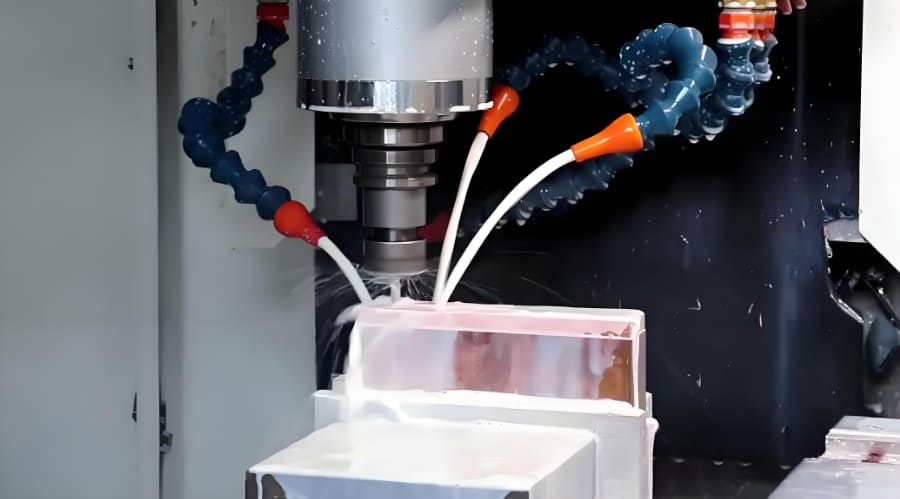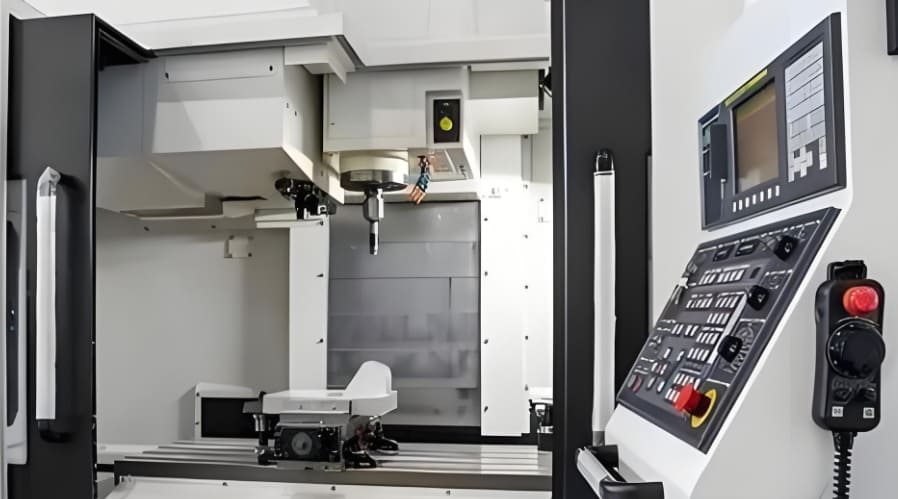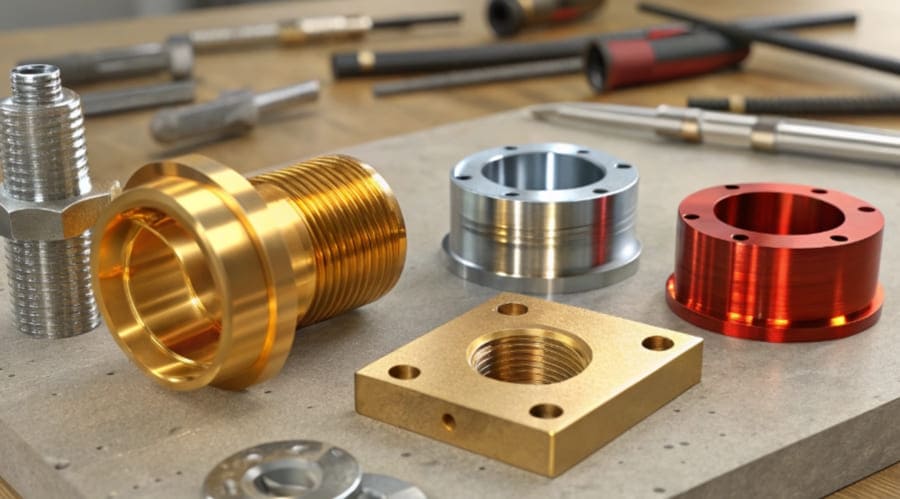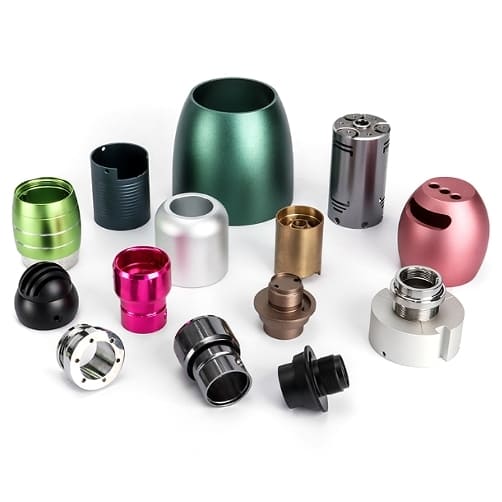Milling is a term you may hear often in manufacturing and machining industries. But what exactly does it mean, and how does it impact the production of precision parts? Let’s dive into the essentials of milling and why it’s a crucial process in custom machining.
Milling is the process of cutting and shaping material using a rotating cutter. This technique is commonly used to create complex parts with high precision.
Milling plays a key role in machining metal, plastic, and other materials. It uses a rotating cutter to remove material from a workpiece, shaping it into the desired form. Let’s explore more about how this process works and its significance in industries like ours.
What is a Milling Machining Process?
Milling can seem like a complex process, but it’s an essential part of creating precise parts. Have you ever wondered how manufacturers achieve such high accuracy? Without a solid understanding of the milling process, you might miss out on the full potential of your custom parts. Let’s break down how milling works and why it’s so important for precision manufacturing.
Milling is the process of using a rotating cutter to remove material from a workpiece. The cutter can be moved in different directions, allowing for precise cutting and shaping of various materials.

Milling is crucial for producing parts with complex shapes and detailed features. It allows for fine-tuning and ensures that components are made to precise specifications. Let’s explore some key features of milling in more detail:
-
Material Removal: Milling effectively removes material from a solid block or workpiece, enabling manufacturers to create intricate features, such as pockets, slots, holes, and contours. Unlike other processes, milling allows for very specific material removal, ensuring parts fit together precisely.
-
Multi-Axis Movement: A critical advantage of milling is the ability to move the cutter along multiple axes (typically 3 to 5), allowing it to approach the material from various angles. This flexibility is essential for creating complex geometries that would be difficult or impossible with other methods.
-
Tool Control: Milling machines allow fine control over the cutting tool’s speed, direction, and depth, ensuring high-quality finishes. Computer Numerical Control (CNC) technology enables automated adjustments, optimizing cutting conditions for each stage of the machining process.
-
Precision: The precision of milling is crucial for industries such as aerospace, automotive, and medical devices, where tight tolerances are essential. The ability to create highly detailed features ensures that parts meet exact specifications, reducing the risk of errors and increasing reliability.
What Are the Three Types of Milling?
Understanding the different types of milling can help you choose the best method for your part. With so many options available, which one will give you the most accurate result? The right milling type will determine the efficiency and precision of the final product.
The three main types of milling are horizontal, vertical, and universal milling. Each type is suitable for different types of tasks.
Horizontal milling machines have cutters that move horizontally, while vertical milling machines feature cutters that move vertically. Universal milling machines offer flexibility by combining both types.
Horizontal Milling
Horizontal milling machines are ideal for larger, more complex parts. They can handle heavy materials and large volumes, making them ideal for industries like automotive. Horizontal milling offers several advantages:
- Greater Tooling Flexibility: The horizontal orientation of the machine allows for multiple cutters to be used simultaneously, which can speed up production times and enhance tool life.
- Better Chip Removal: In horizontal milling, chips are cleared more efficiently due to gravity, preventing clogs and ensuring smoother cuts.
Horizontal mills are preferred for tasks that require extended tool length or those that involve deep cuts and large cross-sections.
Vertical Milling
Vertical milling machines are typically used for smaller, intricate parts. Their precise control makes them perfect for detailed features, such as holes or slots. Some advantages of vertical milling include:
- Ideal for Smaller Parts: Vertical mills are typically better for small to medium-sized parts, where precision and control are paramount.
- Easy to Set Up and Operate: Vertical machines are often simpler to set up and operate, especially for smaller, less complex parts. Their vertical axis is easier to access for tooling changes.
Vertical mills are frequently used in applications where precise, detailed work is required, such as in prototyping or small-scale production runs.
Universal Milling
Universal milling machines combine both vertical and horizontal capabilities, offering greater versatility. These machines are used when both precision and flexibility are needed.
- Multi-Directional Cutting: A universal mill can perform operations from different angles, allowing for more complicated parts to be produced.
- Flexibility: These machines allow operators to change orientations quickly, offering a balance between the benefits of both vertical and horizontal milling.
Universal milling machines are often used for medium- to large-sized parts that require a variety of cutting angles or intricate designs.
What is the Most Preferable Milling Technique?
Choosing the right milling technique can significantly affect the quality of your parts. But how do you decide which one is best for your project? The ideal technique depends on your part’s complexity, material, and precision requirements.
CNC milling is the most preferable milling technique for high-precision, complex parts. This method uses computer-controlled machines for consistent results and faster production times.

CNC milling eliminates human error, reduces waste, and increases efficiency, making it the go-to choice for industries with strict quality standards.
- Automation: CNC milling automates the entire machining process, allowing for intricate designs and more complex operations to be completed with high precision.
- Reduced Lead Times: Since CNC machines are automated, they can operate continuously, reducing downtime and speeding up production.
- Consistency: CNC machines can replicate the same cut with minimal variation, which is critical when producing parts in large batches.
In contrast, manual milling is often used for less complex parts or small-volume production but requires more operator expertise and time.
What Tool is Used in Milling Machine?
When it comes to milling, the tools used can make all the difference. But what exactly are these tools, and how do they work? The right tool is crucial for achieving clean cuts and precise results.
A milling machine uses cutting tools such as end mills, face mills, and drills to remove material from the workpiece.
End mills are used for cutting along the surface of the material, while face mills remove material from a larger area. Drills, on the other hand, are used to create holes in the material.
End Mills
End mills are the most common tools in milling. They come in various sizes and shapes, making them suitable for different cutting tasks.
- Variety of Sizes and Shapes: End mills are available in many configurations, from simple straight-edge tools to complex ones with multiple cutting flutes.
- Applications: They are versatile tools, suitable for both roughing and finishing tasks. They are ideal for making detailed cuts and handling complex geometries.
Face Mills
Face mills are used for broader cuts and are particularly useful when working with flat surfaces.
- Large Surface Cuts: Face mills are ideal for larger surface area cuts or when you need to remove a significant amount of material quickly.
- Smooth Surface Finishes: These tools are great for achieving smooth finishes on wide, flat areas, as they distribute cutting forces evenly.
Drills
Drills are used to create round holes in the material. They can be used in combination with end mills or face mills to achieve the desired shape.
- Precise Hole Creation: Drills are the go-to tool for creating round, accurate holes, and are often used in conjunction with other tools for complete part shaping.
- Variety of Drill Types: Different drill types, including twist drills, step drills, and core drills, are used based on the specific hole requirements.
What Are the Advantages and Disadvantages of Milling?
Milling offers several benefits, but it also has its limitations. By understanding the pros and cons of milling, you can determine whether it’s the right choice for your project.
The advantages of milling include high precision, versatility, and the ability to work with a variety of materials. The main disadvantage is that it can be slower compared to other processes, especially for large quantities.
Milling is ideal for creating complex, detailed parts, but it may not be the fastest option for mass production. Understanding these trade-offs will help you decide if milling is right for your manufacturing needs.
Advantages of Milling
Milling allows for high precision and versatility. It can produce parts with intricate details, sharp edges, and smooth finishes, making it a top choice for custom machining.
- Accuracy: Milling machines, especially CNC models, are capable of producing parts with tight tolerances, which is critical for industries like aerospace and medical device manufacturing.
- Material Versatility: Milling can work with a wide range of materials, including metals, plastics, and composites, making it ideal for various industries.
Disadvantages of Milling
Milling can be slower than other processes, such as turning or stamping, when producing large volumes of parts. It also requires specialized equipment and skilled operators.
- Speed: While milling offers high precision, it can be more time-consuming compared to mass-production methods.
- Cost: Milling machines, particularly CNC versions, are expensive to purchase and maintain, and the process can require significant time and labor costs for setup and operation.
What is Milling Used For?
Milling is used in a wide range of industries and applications. From aerospace to medical devices, this technique plays a crucial role in manufacturing. But what exactly is milling used for?
Milling is used for creating complex parts with high precision, such as gears, shafts, and engine components. It is widely used in industries like aerospace, automotive, and medical device manufacturing.

Milling ensures that parts meet exact specifications, making it essential for industries where quality and accuracy are paramount.
Applications in Aerospace
In aerospace, milling is used to create lightweight yet strong components, such as turbine blades and aircraft frames.
- High-Performance Materials: Milling allows for the precise shaping of advanced materials such as titanium, which are commonly used in aerospace components.
- Weight Reduction: By using milling to hollow out and shape parts, manufacturers can reduce weight without compromising strength.
Applications in Medical Devices
In the medical field, milling is used to produce precise parts like surgical instruments and implants that meet strict hygienic and performance standards.
- Biocompatibility1: Milling ensures the precise shape and finish required for medical devices, making them both functional and safe for implantation in the human body.
- Precision Manufacturing: Components such as joint replacements or dental implants require precise milling to fit into the human anatomy perfectly.
What Material Can Be Used in a Milling Machine?
Milling can be performed on various materials, but not all materials are suitable for every machine. Understanding which materials work best can ensure you get the desired results.
Metals like aluminum, steel, and titanium are commonly used in milling, along with plastics, composites, and even some ceramics.

Materials like aluminum are easy to machine and offer excellent versatility, while tougher metals like titanium require higher cutting speeds and more advanced tools.
Metals
Aluminum is often milled for prototypes, while steel and titanium are used for more demanding applications, like in aerospace or automotive parts.
- Aluminum: Offers a balance of machinability, strength, and lightweight properties, making it ideal for many custom parts.
- Steel and Titanium: These materials are harder to machine but provide greater durability and strength, essential for high-stress applications.
Plastics and Composites
Plastics like acrylic and Polycarbonate2 are milled for applications requiring lightweight, non-corrosive materials. Composites, such as carbon fiber3, are used for their strength-to-weight ratio4.
- Plastics: Suitable for parts requiring corrosion resistance and electrical insulation properties.
- Composites: Used in applications where both strength and lightness are crucial, such as in automotive or aerospace industries.
What is the Most Common Milling Machine?
With various types of milling machines available, which one is the most commonly used? The answer depends on the specific requirements of the project, but CNC milling machines are the most frequently employed in modern manufacturing.
CNC milling machines are the most common type, as they offer high precision, flexibility, and automation.
CNC machines can perform a wide range of tasks, from simple cuts to complex geometries, making them ideal for producing custom parts.
CNC Milling Machines
CNC machines are automated, reducing human error and improving consistency. They are essential for producing high-precision parts quickly and efficiently.
- Automation and Control: CNC machines allow for intricate designs with minimal operator intervention, enhancing both speed and accuracy.
- Customization: These machines can produce a wide variety of parts, making them essential for industries like aerospace, automotive, and medical manufacturing.
Manual Milling Machines
Manual milling machines are still used for simpler tasks and smaller production runs. They require more operator skill but are cost-effective for certain jobs.
- Cost-Effective for Low Volume: While slower and requiring more skill, manual mills are ideal for one-off or small batch production where cost is a factor.
- Flexibility in Operations: These machines are less automated, but they offer flexibility in handling custom operations or repairs.
What is the Difference Between Grinding and Milling?
While both grinding and milling are used for material removal, they are quite different in terms of technique and application. So, what sets them apart?
Grinding is used for achieving a finer surface finish, while milling is used for cutting, shaping, and removing material in more complex ways.
Grinding typically uses abrasive tools to smooth surfaces, while milling involves a rotating cutter to shape parts. Each technique has its strengths depending on the part’s requirements.
What is the Difference Between Lathe and Milling?
Lathe and milling machines are both used in machining, but they work differently. Have you ever wondered which one is better for your specific needs?
Lathes are used for shaping parts by rotating the workpiece, while milling machines use a rotating cutter to remove material.
Lathes are ideal for cylindrical shapes, while milling is better for more intricate, flat, or angular designs. The two can also be used together to create complex parts.
What is the Difference Between Forging and Milling?
Both forging and milling are methods used to shape metal, but they work in completely different ways. So, how do they compare?
Forging involves shaping metal using heat and pressure, while milling removes material using a rotating cutter.
Forging is ideal for creating strong, durable parts, but milling offers more precision and versatility in design. Depending on your project’s needs, one method may be more suitable than the other.
Conclusion
Milling is a key process in manufacturing, enabling the production of high-precision, custom parts for various industries. Whether manual or CNC, milling ensures that parts are made to exact specifications.
-
Learn more about biocompatibility in medical devices, and why it is crucial for implants and surgical tools. ↩
-
Polycarbonate is widely used in applications requiring lightweight and high-impact-resistant materials. ↩
-
Carbon fiber is recognized for its exceptional strength-to-weight ratio, making it ideal for aerospace and automotive applications. ↩
-
Strength-to-weight ratio is a key advantage in materials used for lightweight and durable parts in various industries. ↩
